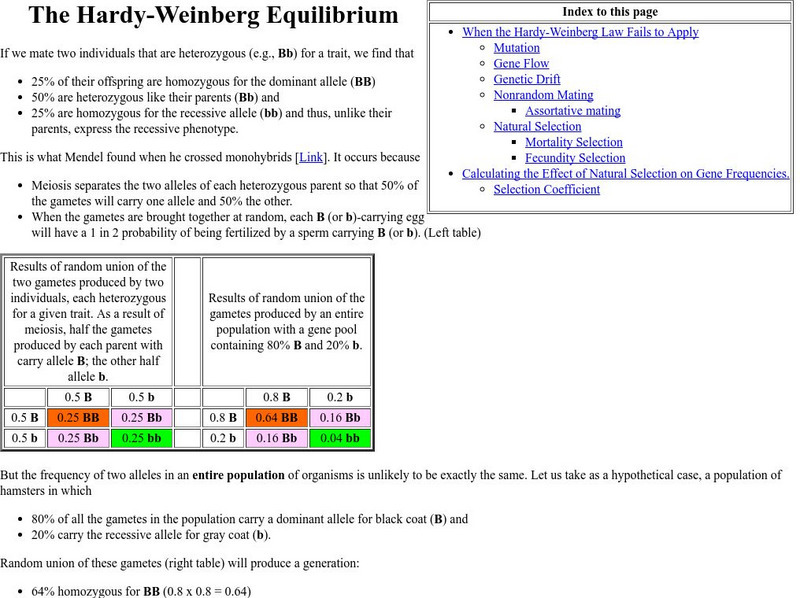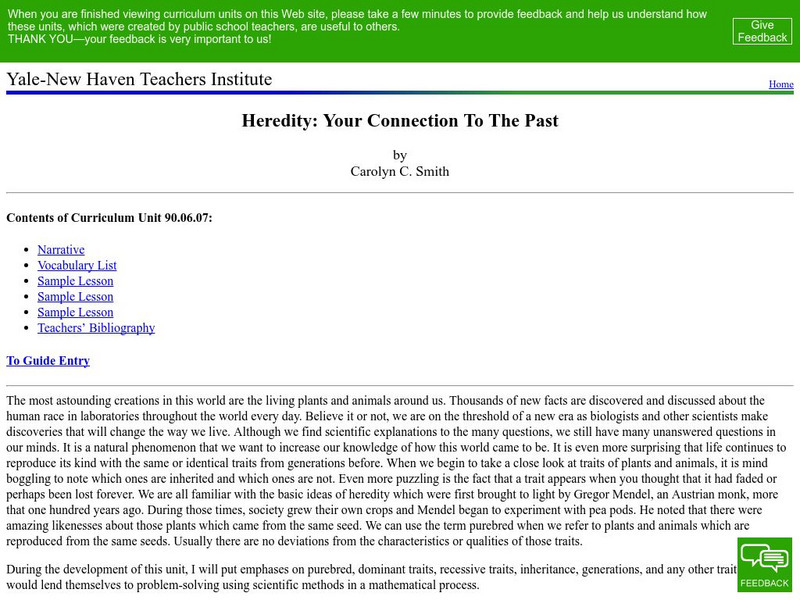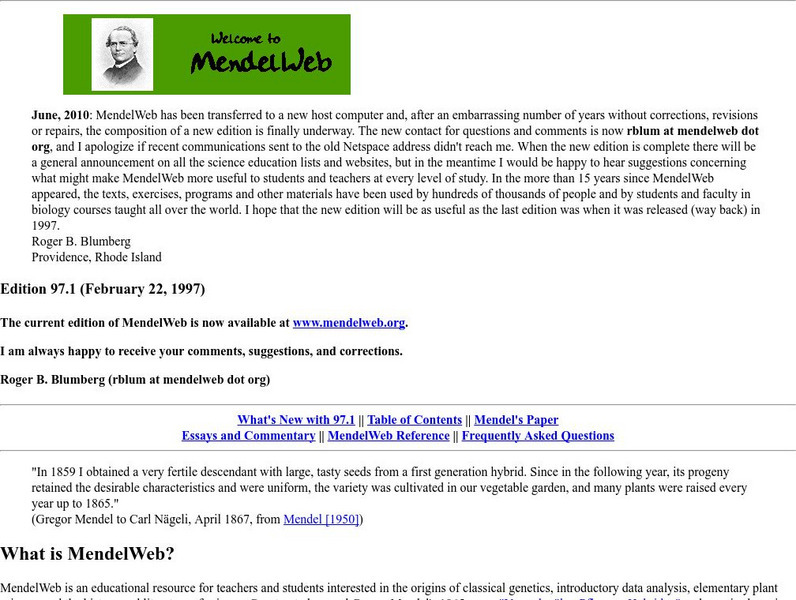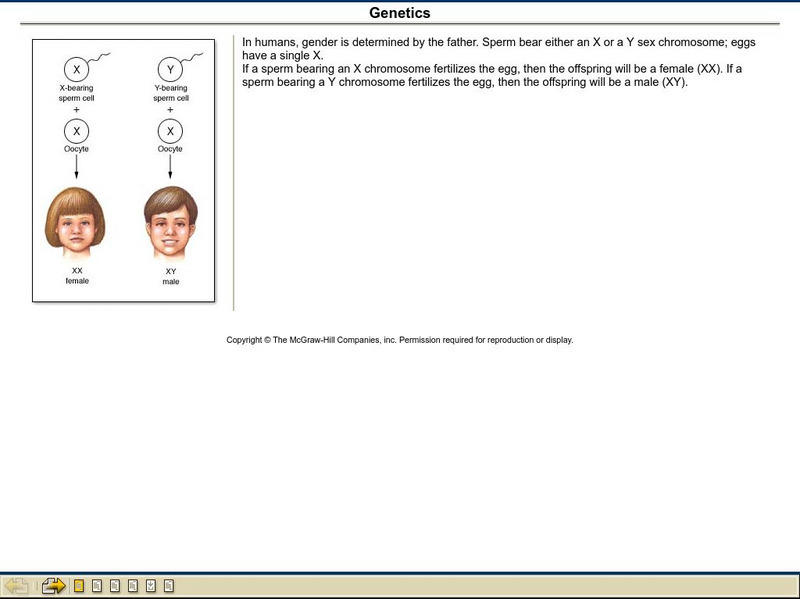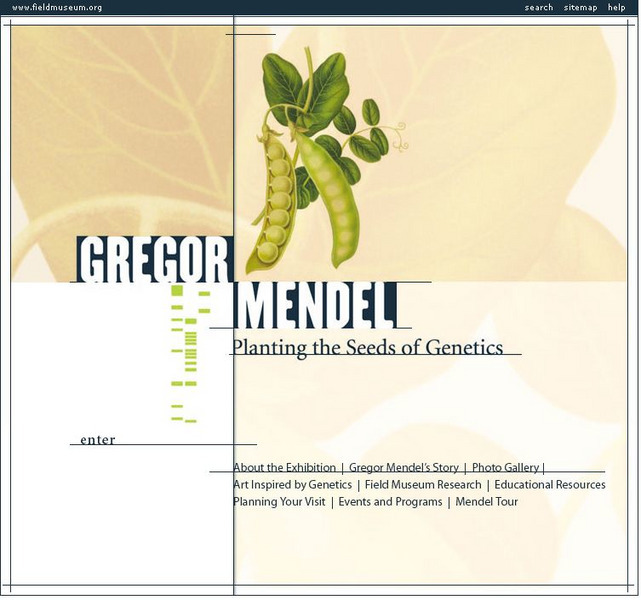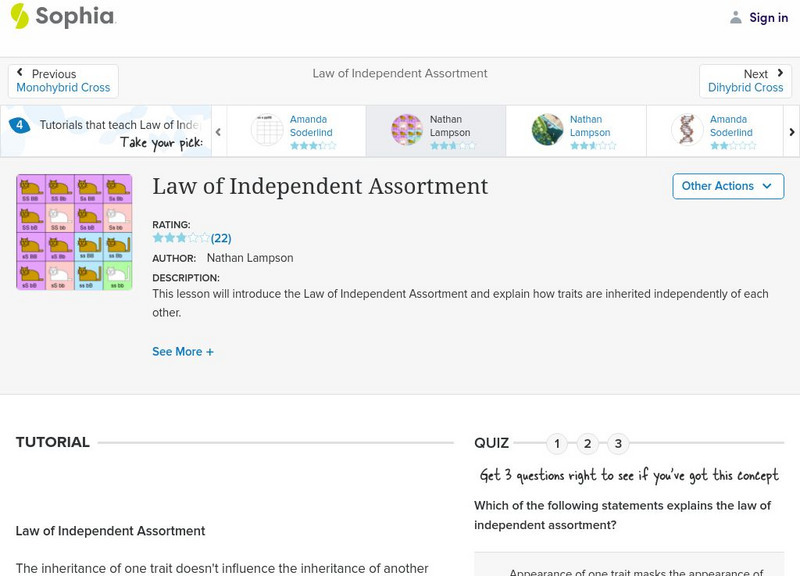Cold Spring Harbor Laboratory
Dna From the Beginning: Genes Come in Pairs
This animated lesson will explain how genes are inherited in pairs, one from the mother and one from the father.
Cold Spring Harbor Laboratory
Dna From the Beginning: Genetic Inheritance Follows Certain Rules
Find out what happened when Mendel crossed two hybrid pea plants. The animations do a good job explaining why these crosses produce a 3:1 ratio of traits.
Biology Pages
Kimball's Biology Pages: Hardy Weinberg Equilibrium
Discusses conditions needed for the Hardy-Weinberg Law to hold true and demonstrates calculations involving allelic frequencies to illustrate this principle.
Concord Consortium
Concord Consortium: Stem Resources: Geniverse
A virtual world where students conduct genetics experiments on a model species called drakes. After the story narrative is introduced, they engage in a quest to heal a sick dragon. As they play, they will learn about the principles of...
Yale University
Yale New Haven Teachers Institute: Heredity: Your Connection to the Past
An indepth introduction to genetics as a whole with sample lessons, vocabulary, and bibliography. From the Yale-New Haven Teachers Institute.
Estrella Mountain Community College
Estrella Mountian College: Introduction to Genetics
This site explains genetic beliefs before and after Mendel, and also includes a section on Mendel himself and his experiments, entitled, "The Monk and his Peas".
Other
Mendel Web
This site, built upon Gregor Mendel's famous paper of 1865, is a teaching and learning resource complete with the full text of his paper, various texts, essays and commentaries, reference materials, and much more.
University of Hamburg
University of Hamburg: Deviations From Mendelian Laws And: What Is the Meaning of Dominance?
Upper level discussion of several of Mendel's experiments and laws.
Other
Genome British Columbia: Science 10 Life Science: Genetics
This PowerPoint presentation gives a very detailed look at the science of genetics and some of the ethical and social considerations from biotechnical applications of genetics.
McGraw Hill
The Mc Graw Hill Companies, Inc.: Genetics
The basic principles of genetics are in this effective site. Gender determination, recessive traits, and the Punnet Square are the topics examined. There is also a Punnet Square practice exercise to assess your comprehension of the...
University of Arizona
University of Arizona: Dihybrid Problem Set
This site is provided by the University of Arizona and it gives great information on the subject. Good collection of dihybrid crosses which exemplify the issue of independent assortment. Work these once you think you've mastered th concept.
The Field Museum
Field Museum: Exhibits: Gregor Mendel: Planting the Seeds of Genetics
Explore this online exhibit highlighting Gregor Mendel's contributions to the science of genetics. Read about Mendel's life, view pieces of art inspired by genetics, and find a wealth of resources for planning further research on...
Other
Pea Soup: The Story of Mendel
College student site with information about Gregor Mendel and Mendelian Genetics. Also contains an interactive pea experiment and a glossary.
Other
North Dakota State Univ.: Mendel's Law of Ind. Assort.
Mendel's second law and how he arrived at it through his experiments. Includes vocabulary and examples.
Other
North Dakota State Univ./mendel's Law of Ind. Asstort.
Good description of Mendel's findings and his second major principle.
McGraw Hill
Glencoe Biology: Complex Patterns of Inheritance: Self Check Quiz
A quick, five question multiple-choice quiz assessing complex patterns of human inheritance.
National Health Museum
Access Excellence: Gregor Mendel
Basic information on the life and works of biologist Gregor Mendel.
National Human Genome Research Institute
National Human Genome Research Institute: Talking Glossary: Allele
Resource provides an audio explanation as well as a written definition of what an allele is. Includes illustration as well.
Texas A&M University
Cells Are Us: Story Time: Mendel
A biography of Gregor Mendel, the father of genetics.
Bryn Mawr College
Serendip: Dragon Genetics: Understanding Inheritance
Brief text summary of what students learn in the Dragon Genetics II lab along with links to download Student Handouts and Teacher Preparation Notes in PDF and Word formats. Using Popsicle sticks, students experiment with different...
BiologyWise
Biology Wise: Comparison of Reciprocal Cross vs. Test Cross
Explains two types of genetic cross - a reciprocal cross and a test cross. Examples are described for a monohybrid and a dihybrid test cross and for a reciprocal cross.
Sophia Learning
Sophia: Law of Independent Assortment: Lesson 3
This lesson will introduce the Law of Independent Assortment and explain how traits are inherited independently of each other. It is 3 of 4 in the series titled "Law of Independent Assortment."
Sophia Learning
Sophia: Law of Independent Assortment: Lesson 4
This lesson will introduce the Law of Independent Assortment and explain how traits are inherited independently of each other. It is 4 of 4 in the series titled "Law of Independent Assortment."
Sophia Learning
Sophia: Law of Independent Assortment: Lesson 2
This lesson will introduce the Law of Independent Assortment and explain how traits are inherited independently of each other. It is 2 of 4 in the series titled "Law of Independent Assortment."




